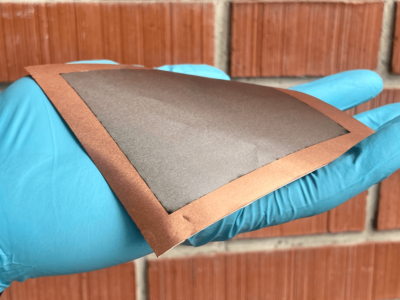
Wearable skin vibration sensor allows voice recognition
When the sensor is attached to a neck, it can precisely recognize voice through vibration of the neck skin and – unlike a microphone on an external portable device – is not affected by ambient noise or the volume of sound. This addresses problems with conventional vibration sensors that recognize voice through air vibration, say the researchers, as the sensitivity of such sensors decreases due to mechanical resonance and damping effect, reducing their ability to measure voices quantitatively for purposes such as security authentication.
“This research is very meaningful in a way that it developed a new voice-recognition system which can quantitively sense and analyze voice and is not affected by the surroundings,” says Professor Kilwon Cho who led the study. “It took a step forward from the conventional voice-recognition system that could only recognize voice qualitatively.”
In their study, the researchers demonstrated that voice pressure is proportional to the acceleration of neck skin vibration at various sound pressure levels from 40 to 70 dB of sound pressure level (SPL). They then developed a vibration sensor consisting of an ultrathin polymer film and a diaphragm with tiny holes that can sense voices quantitively by measuring the acceleration of skin vibration.
The researchers also successfully showed that their device can accurately recognize voice without vibrational distortion even in a noisy environment and at a very low voice volume with the user wearing a mouth mask. Their work, say the researchers, can be further extended to various voice-recognition applications such as electronic skin, human-machine interfaces, and wearable vocal healthcare monitoring devices.
For more, see “An ultrathin conformable vibration-responsive electronic skin for quantitative vocal recognition.”
Related articles:
Artificial skin sensor promises ‘superhuman’ perception
Nano-membrane transparent loudspeaker attaches to skin
Graphene-based e-skin detects vibrations from audio to ultrasound
Voice verification sensor eliminates the microphone
Optical human-to-machine communication sensors promise ‘near-perfect’ speech recognition
 If you enjoyed this article, you will like the following ones: don't miss them by subscribing to :
eeNews on Google News
If you enjoyed this article, you will like the following ones: don't miss them by subscribing to :
eeNews on Google News




